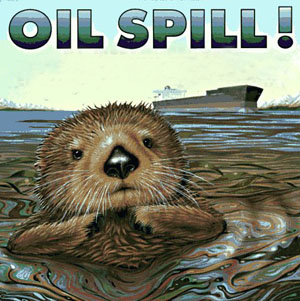
Ecological effects of oil spill could last for decades
By Laura Dudnick
November 14, 2007
The ecological impact of Wednesday's 58,000-gallon oil spill into the San Francisco Bay could last for decades, David Lewis, executive director of Save the Bay, said yesterday.
"This is a disaster and a tragedy for the environment in the bay," Lewis said.
In addition to the 1,000-plus birds - some of which are endangered - reported dead or found saturated in oil since Wednesday, water plants and marine life have been impacted by the spill as well, according to Lewis.
The California Clapper Rail, a bird known for its shy instincts, is among the endangered species living by the bay, Lewis said.
Other species of concern in the bay include salmon and herring fish, according to Lewis.
Plant life is threatened as well, according to Lewis. Oil is accumulating on tidal marsh and eelgrass, a type of underwater grass that grows in shallow, sandy areas of the bay and serves as a home for fish and a feeding area for birds, Lewis said.
"Oil smothers and sticks to the plants, and kills them," Lewis said. He added the underwater plants are more exposed to the oil during low tide because the oil for the most part remains on the surface of the water.
"(But) over time the oil can sink," Lewis said. "Then it gets attached to heavier sediments like soil and sand. It collects in globs and sinks to the bottom, where it affects habitats on the bottom of the bay.
"In the places where the oil gets washed onto the shore and it is not cleaned up, (the effects) can last for decades," Lewis said.
However, though Wednesday's fuel spill is catastrophic for the bay, oil is pumped into the waters every day from city storm drains, according to Lewis.
"This is a big pulse of very toxic bunker fuel, but each car in the Bay Area contributes a quart of oil into the bay every year," Lewis said.
Good news for marine life, however, is that as of today "there is not a lot of oil in the open water," Coast Guard Senior Chief Keith Alholm said, referring to the fuel from Wednesday's spill. Oil is now mainly impacting the beaches, he added.
Nearly a dozen Bay Area beaches remain closed as efforts to clean the soiled shorelines are ongoing, according to the U.S. Coast Guard. About 25 percent of residue has been cleaned from Angel Island, RCA and Agate beaches, while Rodeo and Muir beaches have been stripped of approximately 60 percent of oil product and Stinson Beach is 80 percent clean, the Coast Guard reported yesterday.
Oil is about 20 percent cleared from the area around Fort Funston in San Francisco. Baker and China beaches are both approximately 85 percent clean, and the area stretching from Pier 1 to Pier 39 is 100 percent clean, according to the Coast Guard.
Once the beaches are clear of oil, certification from local, state and federal authorities is needed to ensure the areas are safe before the beaches can be reopened, according to the Coast Guard.
Gov. Arnold Schwarzenegger yesterday suspended fishing for human consumption while the Office of Environmental Health Hazard Assessment in consultation with the California Department of Public Health examine whether consuming marine life caught in the oiled areas is hazardous, according to the governor's office.
Fishing for human consumption will not be allowed from Thursday until Dec. 1, or when the Department of Fish and Game and state health officials determine fishing can resume, the governor's office reported.
The Bay Area's crab season, originally scheduled to begin Thursday, was postponed when local crab fisherman voted on Saturday to officially request the season be delayed.
Copyright © 2007 by Bay City News, Inc.
No comments:
Post a Comment